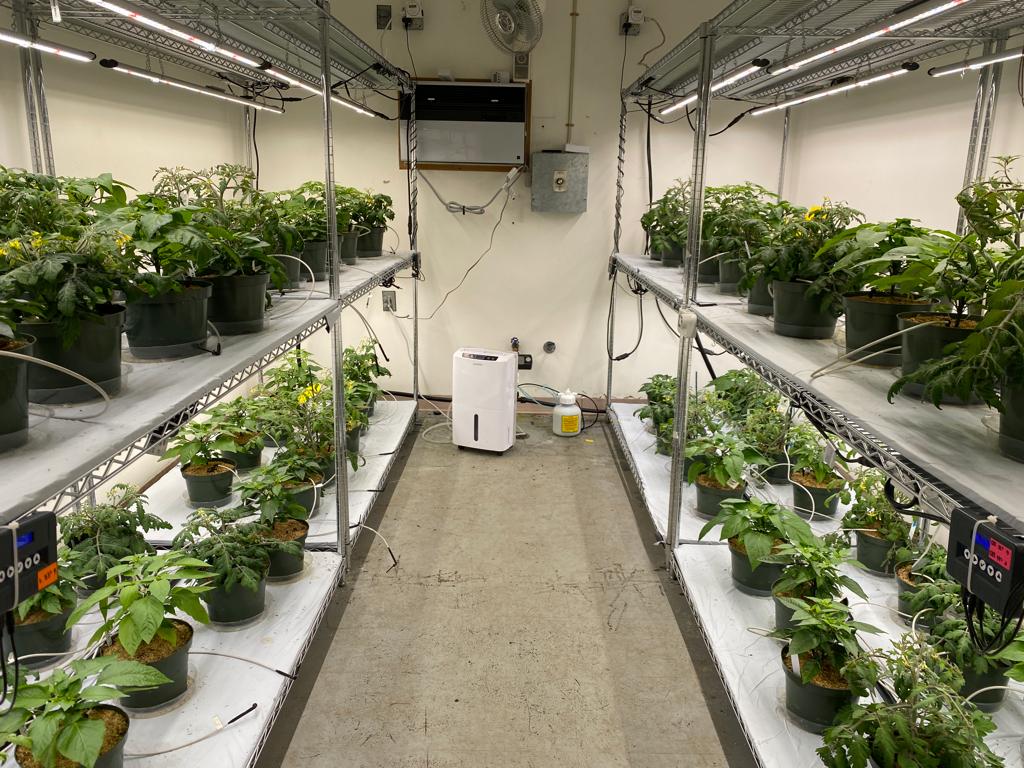Research Sheds Light on Which Compact Tomatoes Grow Well Indoors
by BRAD BUCK, UF/IFAS correspondent
Do you fancy growing a tomato inside your home? If so, you’re one of millions who produce fruits and vegetables in the comfort of their abodes.
Sales of vegetable bedding plants for home gardening increased from $107 million in 2019 to $146 million in 2020 Furthermore, there were 61 million gardeners in 2021, up from 42 million before COVID-19.
Because growing food indoors is increasingly popular – whether you’re gardening at home or producing tomatoes in an indoor farm — a University of Florida scientist is studying which fruits and vegetables can flourish inside.
Celina Gómez, a UF/IFAS assistant professor of environmental horticulture, led a recently published study in which she found that several compact tomato varieties grow well indoors.
“Most of the compact plants we’ve grown are short and narrow, making them suitable to be placed in small spaces such as kitchen countertops or office desks,” Gómez says. By contrast, “regular” tomato plants used for outdoor gardening are tall and often require cages or some other type of support.
For the study, Gómez and her master’s student, Stephanie Cruz, tried to grow 20 compact tomato cultivars indoors and in greenhouses at the main UF campus in Gainesville. To mimic indoor home growing, scientists used cooler temperatures and low light. They did not use supplemental lighting in the greenhouse.
Based on the research, Gómez recommends cultivars such as Micro Tom, Siam, Red Robin, and Sweet ‘n’ Neat Scarlet for transplant producers to grow and ship to nurseries for you to buy and grow at home. Other varieties, such as Little Bing, Sweet Sturdy Jimmy, and Tarzan are too large for indoor growing, she says.
The study’s results are crucial for indoor gardeners and can help commercial growers.
“Indoor plant production in vertical farms — also known as plant factories or indoor farms — aims to grow high-value plant products to sell to consumers,” she says. “These production facilities are often located in urban or peri-urban areas to capitalize on the growing interest in local food production. While the main interest of our program is to support urban gardening, our findings are also applicable to the commercial vertical farming industry. We are identifying cultivars that have potential to support the growing industry, especially as it starts to venture into other crops beyond leafy greens.”
Compact, high-yielding plants are critical for the commercial industry to be economically viable, while resilient, attractive, and productive plants are important for the home grower, she said.
Since the study, Gómez and her team have evaluated newer compact tomato cultivars that show potential to grow indoors.
“Breeders are continuing to see the potential to release cultivars that will be suitable for indoor plant production for both gardening (non-commercial) and vertical farming (commercial) applications,” she says.

